Numerical Analysis of New PCM Thermal Storage Systems
Abstract
:1. Introduction
- PCM material embedded in a metal frame.
- PCM material composed of metal particles with high thermal conductivity.
- Macro and micro encapsulation of the PCM material.
- Use of graphite-composite or other composite PCM materials
- Use of finned tubes.
2. PCM Heat Storage
- , : thermal flux in direction .
- , : thermal storage size in direction .
- , : thermal flux in direction .
- , : thermal storage size in direction .
- , : thermal flux in x-direction, concerning only the PCM material surface.
- , : thermal storage size in direction .
3. Case Study
4. Mathematical Model
- Steady-state regime;
- Fully developed laminar flow;
- A duct with a straight axis and constant cross-section with rigid, non-porous walls;
- Constant properties for incompressible Newtonian fluid.
- natural convection is neglected, so ;
- and so ;
- ;
- .
5. Parametric Analysis
6. Conclusions
Author Contributions
Funding
Data Availability Statement
Conflicts of Interest
Nomenclature
| Al | aluminum |
| cp | specific heat at constant pressure |
| f | refers to the heat transfer fluid |
| l | refers to liquid |
| Lx | Length of channels within the phase changing mass |
| Ly | thermal storage size in direction z |
| Lz | thermal storage size in direction z |
| m | paraffin mass |
| thermal flux in direction z | |
| thermal flux in x-direction, concerning only PCM material surface | |
| thermal flux in direction z | |
| thermal flux in direction y | |
| Q | total energy stored |
| V | thermal storage volume |
| α | thermal diffusivity |
| k | thermal conductivity |
| ρ | density |
| χ | title ratio |
References
- Bernal, I.A.H.; Rivas, A.M.J.; Ortega Del Rosario, M.D.L.A.; Saghir, M.Z. A Redesign Methodology to Improve the Performance of a Thermal Energy Storage with Phase Change Materials: A Numerical Approach. Energies 2022, 15, 960. [Google Scholar] [CrossRef]
- Robaidi, A.A. Development of novel polymer phase change material for heat storage application. Int. J. Mater. Sci. Appl. 2013, 2, 168–172. [Google Scholar] [CrossRef]
- Telkes, M. Thermal storage for solar heating and cooling. In Proceedings of the Workshop on Solar Energy Storage Subsystems for Heating and Cooling of Buildings, Charlottesville, VA, USA, 16–18 April 1975. [Google Scholar]
- Lane, G.A. Solar Heat Storage: Latent Heat Materials. Volume II. Technology; CRC Press: Boca Raton, FL, USA, 1986. [Google Scholar] [CrossRef]
- Hinojosa, J.F.; Moreno, S.F.; Maytorena, V.M. Low-Temperature Applications of Phase Change Materials for Energy Storage: A Descriptive Review. Energies 2023, 16, 3078. [Google Scholar] [CrossRef]
- Zalba, B. Free-Cooling, an Application of PCMs in TES. Ph.D. Thesis, University of Zaragoza, Zaragoza, Spain, 2002. [Google Scholar]
- Vakilaltojjar, S.M.; Saman, W. Analysis and modelling of a phase change storage system for air conditioning applications. Appl. Therm. Eng. 2001, 21, 249–263. [Google Scholar] [CrossRef]
- Vakilaltojjar, S.M.; Saman, W. Domestic heating and cooling with thermal storage. In Proceedings of the Terrastock, Stuttgart, Germany, 28 August–1 September 2000. [Google Scholar]
- Bruno, F.; Saman, W. Testing of a PCM energy storage system for space heating. In Proceedings of the World Renewable Energy Congress VII, Cologne, Germany, 29 June–5 July 2002. [Google Scholar]
- Mulligan, J.C.; Colvin, D.P.; Bryant, Y.G. Microencapsulated phase-change material suspensions for heat transfer in spacecraft thermal systems. J. Spacecr. Rocket. 1996, 33, 278–284. [Google Scholar] [CrossRef]
- Marín, J.M.; Zalba, B.; Cabeza, L.F.; Mehling, H. Improvement of a thermal energy storage using plates with paraffin–graphite composite. Int. J. Heat Mass Transf. 2005, 48, 2561–2570. [Google Scholar] [CrossRef]
- Cabeza, L.F.; Mehling, H.; Hiebler, S.; Ziegler, F. Heat transfer enhancement in water when used as PCM in thermal energy storage. Appl. Therm. Eng. 2002, 22, 1141–1151. [Google Scholar] [CrossRef]
- Mehling, H.; Hiebler, S.; Ziegler, F. Latent heat storage using a PCM–graphite composite material. In Proceedings of the Terrastock 2000—8th International Conference on Thermal Energy Storage, Stuttgart, Germany, 28 August–1 September 2000; pp. 375–380. [Google Scholar]
- Py, X.; Olives, R.; Mauran, S. Paraffin/porous-graphite-matrix composite as a high and constant power thermal storage material. Int. J. Heat Mass Transf. 2001, 44, 2727–2737. [Google Scholar] [CrossRef]
- Xiao, M.; Feng, B.; Gong, K. Thermal performance of a high conductive shape-stabilized thermal storage material. Sol. Energy Mater. Sol. Cells 2001, 69, 293–296. [Google Scholar] [CrossRef]
- Wang, W.; Yang, X.; Fang, Y.; Ding, J. Preparation and performance of form-stable polyethylene glycol/silicon dioxide composites as solid–liquid phase change materials. Appl. Energy 2009, 86, 170–174. [Google Scholar] [CrossRef]
- Wang, W.; Yang, X.; Fang, Y.; Ding, J.; Yan, J. Enhanced thermal conductivity and thermal performance of form-stable composite phase change materials by using ß-aluminum nitride. Appl. Energy 2009, 86, 1196–1200. [Google Scholar] [CrossRef]
- Velraj, R.; Seeniraj, R.V.; Hafner, B.; Faber, C.; Schwarzer, K. Experimental analysis and numerical modelling of inward solidification on a finned vertical tube for a latent heat storage unit. Sol. Energy 1997, 60, 281–290. [Google Scholar] [CrossRef]
- Ismail, K.A.R.; Alves, C.L.F.; Modesto, M.S. Numerical and experimental study on the solidification of PCM around a vertical axially finned isothermal cylinder. Appl. Therm. Eng. 2001, 21, 53–77. [Google Scholar] [CrossRef]
- Sparrow, E.M.; Larson, E.D.; Ramsey, J.W. Freezing on a finned tube for either conduction-controlled or natural-convection-controlled heat transfer. Int. J. Heat Mass Transf. 1981, 24, 273–284. [Google Scholar] [CrossRef]
- Stritih, U. An experimental study of enhanced heat transfer in rectangular PCM thermal storage. Int. J. Heat Mass Transf. 2004, 47, 2841–2847. [Google Scholar] [CrossRef]
- Trp, A. An experimental and numerical investigation of heat transfer during technical grade paraffin melting and solidification in a shell-and-tube latent thermal energy storage unit. Sol. Energy 2005, 79, 648–660. [Google Scholar] [CrossRef]
- Trp, A.; Lenic, K.; Frankovic, B. Analysis of the influence of operating conditions and geometric parameters on heat transfer in water-paraffin shell-and-tube latent thermal energy storage unit. Appl. Therm. Eng. 2006, 26, 1830–1839. [Google Scholar] [CrossRef]
- Erek, A.; İlken, Z.; Acar, M.A. Experimental and numerical investigation of thermal energy storage with a finned tube. Int. J. Energy Res. 2005, 29, 283–301. [Google Scholar] [CrossRef]
- Erek, A.; Ezan, M.A. Experimental and numerical study on charging processes of an ice-on-coil thermal energy storage system. Int. J. Energy Res. 2007, 31, 158–176. [Google Scholar] [CrossRef]
- Fabbri, G. Heat transfer optimization in internally finned tubes under laminar flow conditions. Int. J. Heat Mass Transf. 1998, 41, 1243–1253. [Google Scholar] [CrossRef]
- Fabbri, G.; Greppi, M. An optimized heat sink for thermophotovoltaic panels. J. Appl. Res. Ind. Eng. 2018, 5, 1–9. [Google Scholar]
- Copiello, D.; Fabbri, G. Multi-objective genetic optimization of the heat transfer from longitudinal wavy fins. Int. J. Heat Mass Transf. 2009, 52, 1167–1176. [Google Scholar] [CrossRef]
- Fabbri, G.; Greppi, M.; Lorenzini, M. Optimization with genetic algorithms of PVT system global efficiency. J. Energy Power Eng. 2012, 6, 1035. [Google Scholar] [CrossRef]
- Fabbri, G. Optimum performances of longitudinal convective fins with symmetrical and asymmetrical profiles. Int. J. Heat Fluid Flow 1999, 20, 634–641. [Google Scholar] [CrossRef]
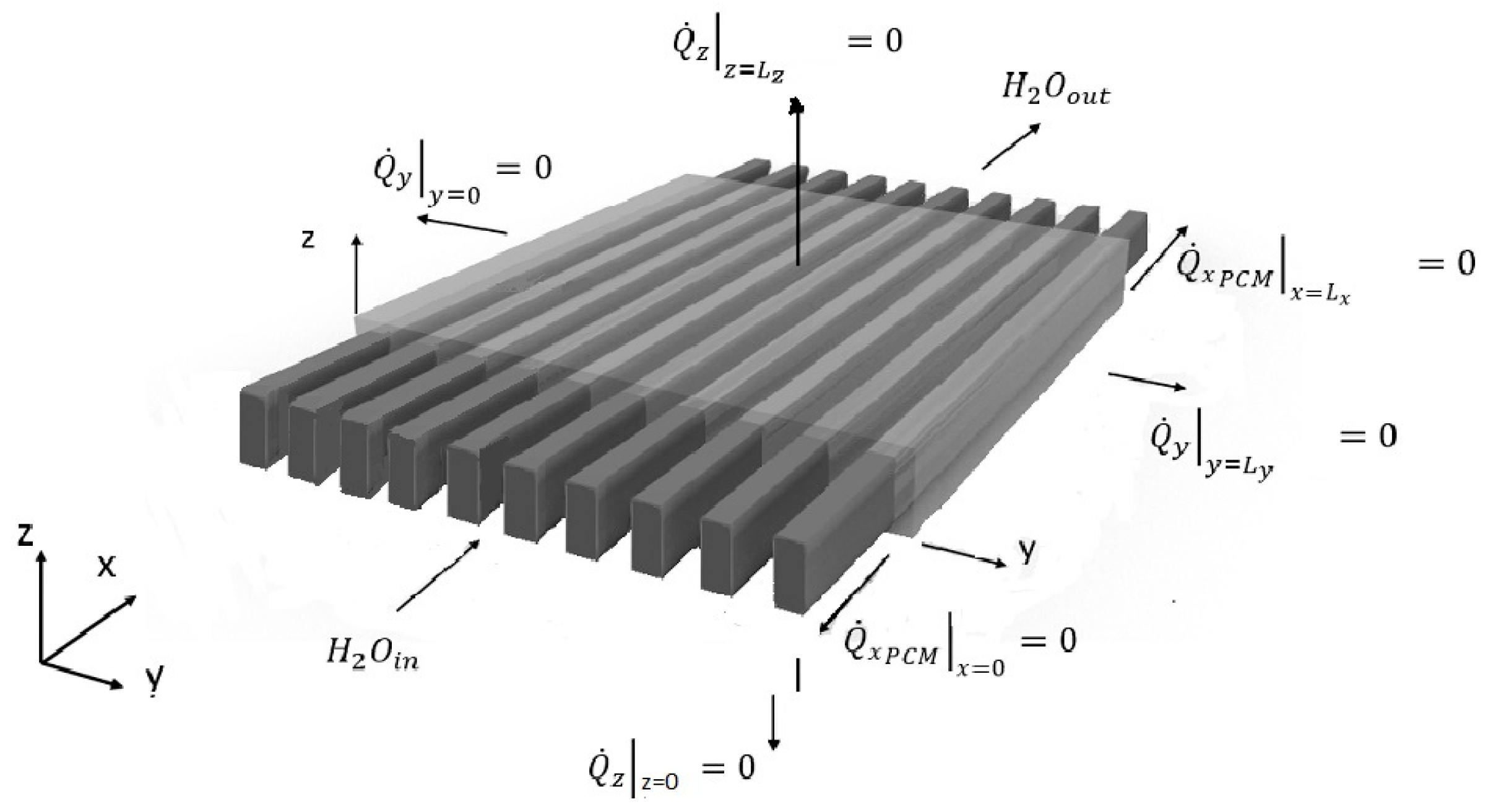
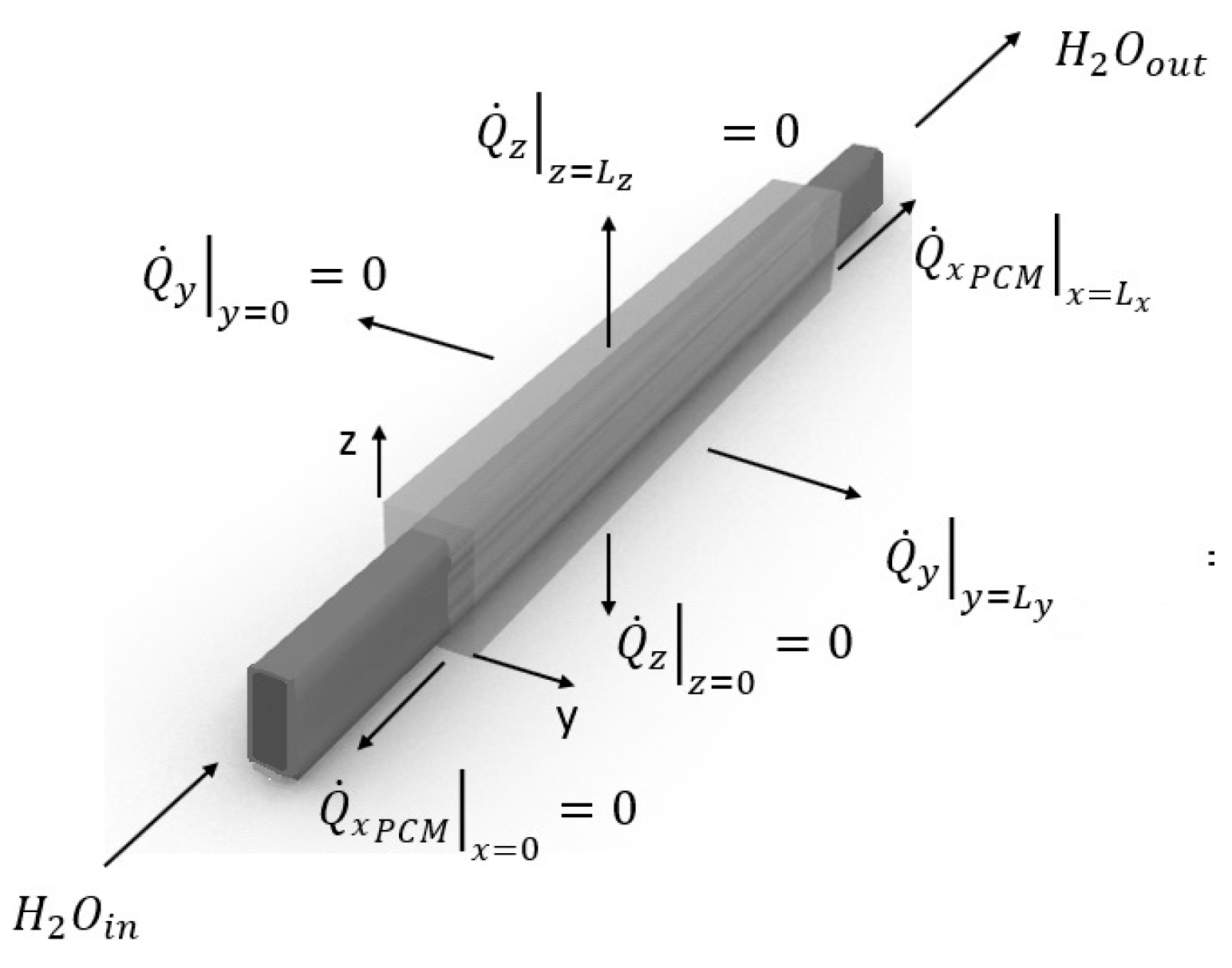

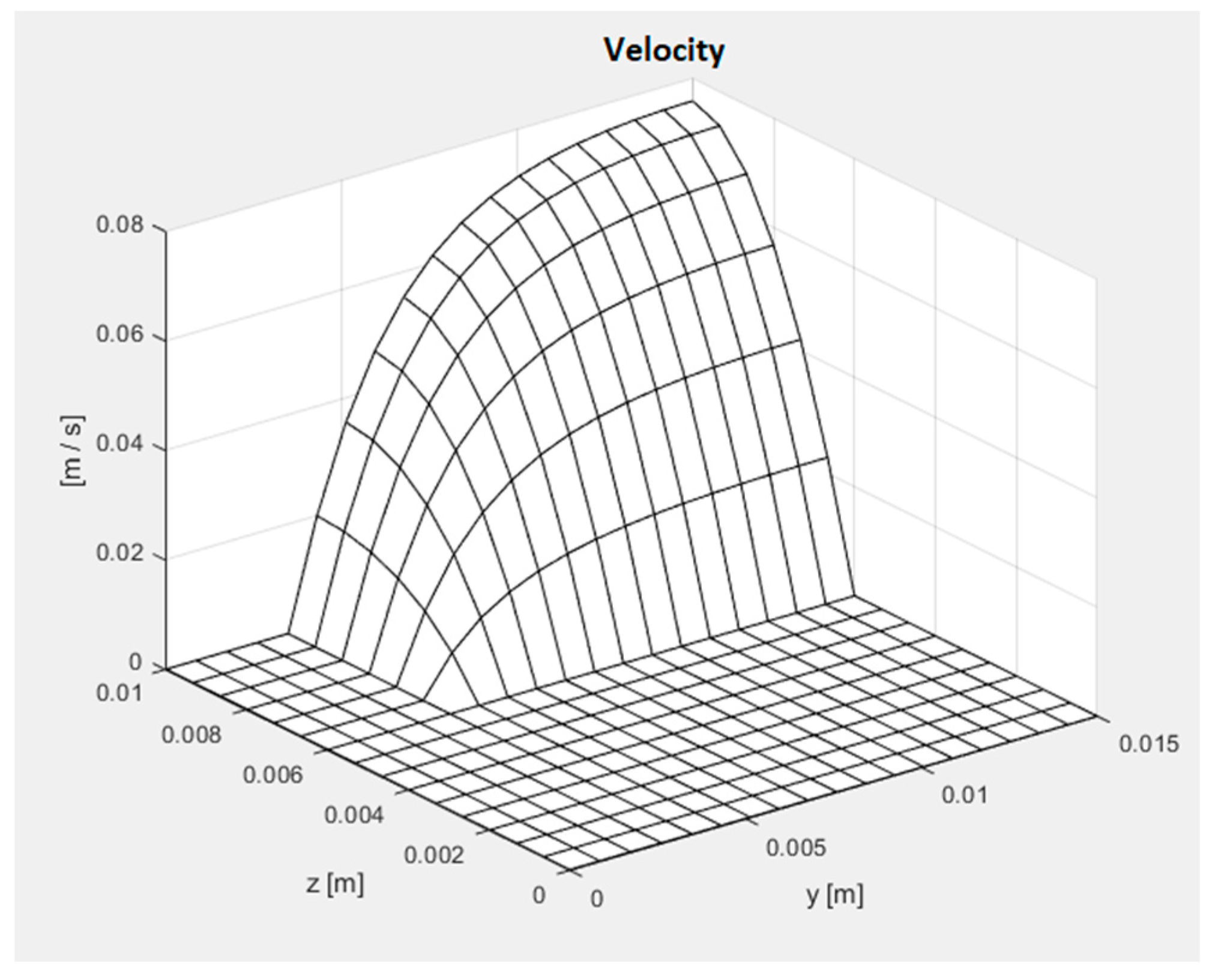
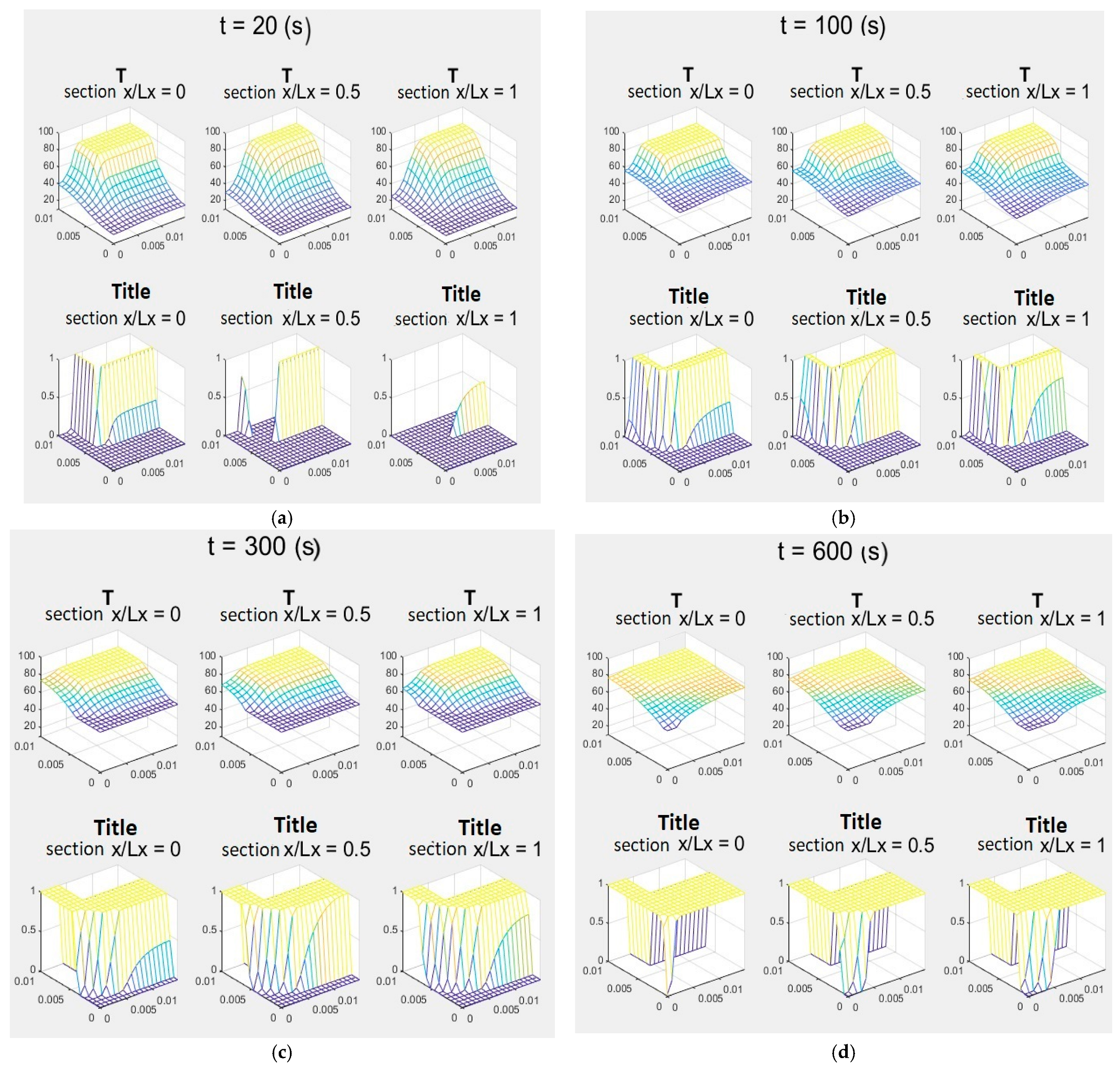
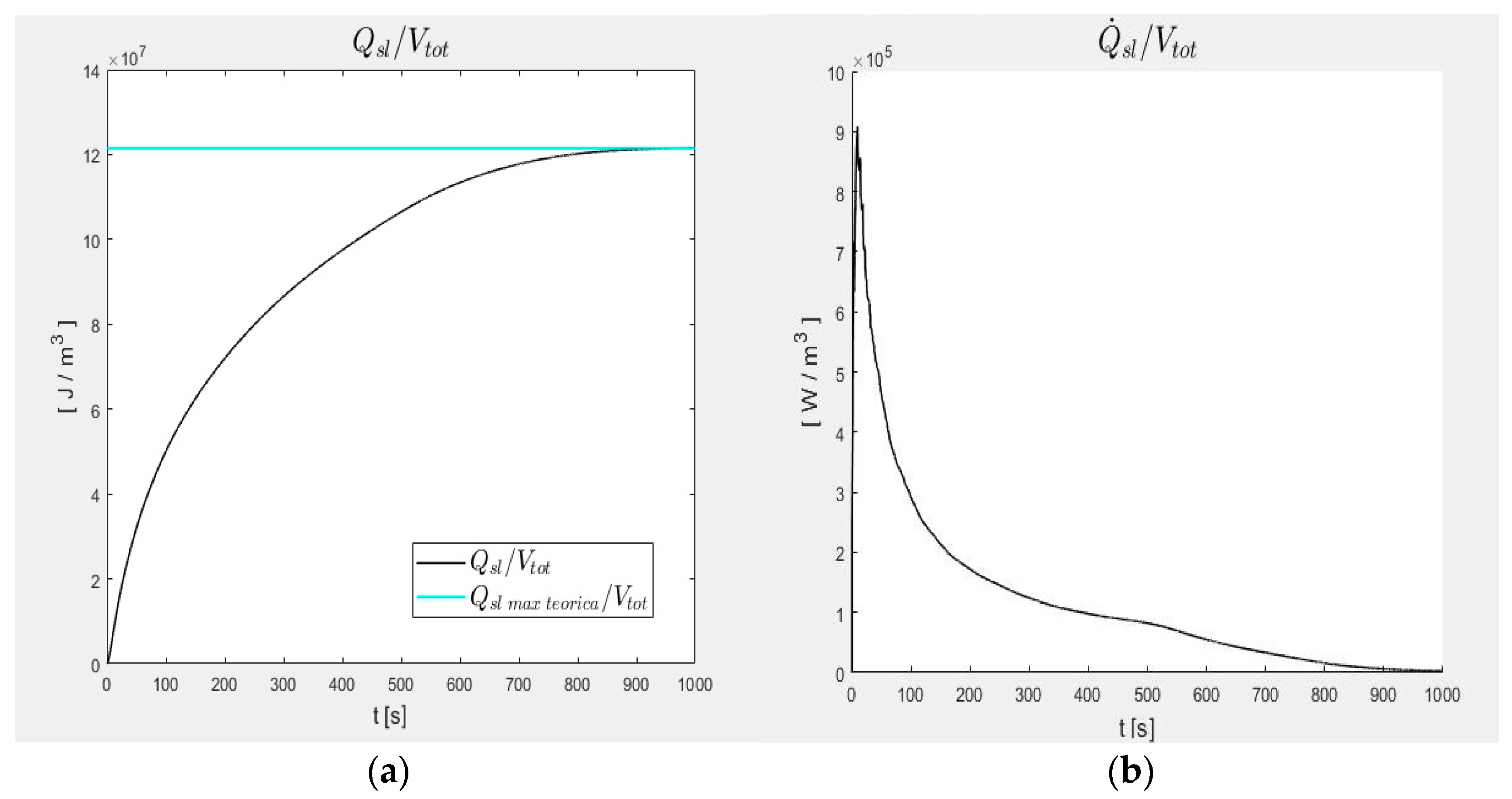

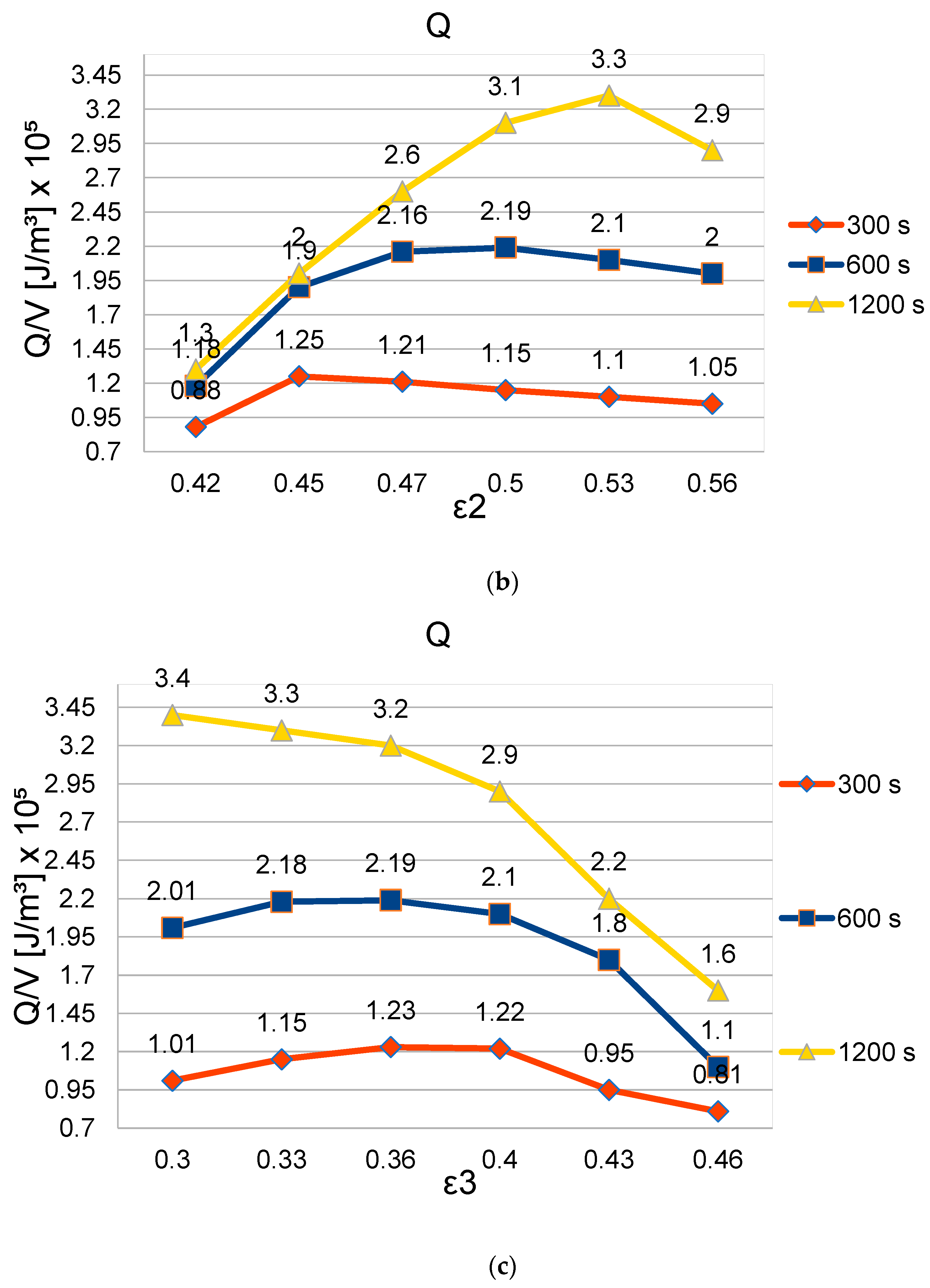
Disclaimer/Publisher’s Note: The statements, opinions and data contained in all publications are solely those of the individual author(s) and contributor(s) and not of MDPI and/or the editor(s). MDPI and/or the editor(s) disclaim responsibility for any injury to people or property resulting from any ideas, methods, instructions or products referred to in the content. |
© 2024 by the authors. Licensee MDPI, Basel, Switzerland. This article is an open access article distributed under the terms and conditions of the Creative Commons Attribution (CC BY) license (https://creativecommons.org/licenses/by/4.0/).
Share and Cite
Fabbri, G.; Greppi, M.; Amati, F. Numerical Analysis of New PCM Thermal Storage Systems. Energies 2024, 17, 1772. https://doi.org/10.3390/en17071772
Fabbri G, Greppi M, Amati F. Numerical Analysis of New PCM Thermal Storage Systems. Energies. 2024; 17(7):1772. https://doi.org/10.3390/en17071772
Chicago/Turabian StyleFabbri, Giampietro, Matteo Greppi, and Federico Amati. 2024. "Numerical Analysis of New PCM Thermal Storage Systems" Energies 17, no. 7: 1772. https://doi.org/10.3390/en17071772




